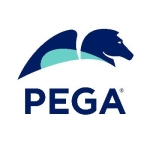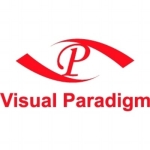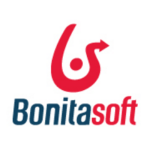What is our primary use case?
We use it for creating a structured record of our processes and for updating them. We also use it to analyze how strategic changes in our company may impact these processes.
We work with the cloud solution. We don't have to have anything installed on our computers locally. We designed the processes and the framework ourselves.
How has it helped my organization?
With ARIS:
- We now have a better view of how everybody works in our organization and it helps us to see that everybody is doing the work they should be doing.
- We have more standardization, compared to when we first started, when it comes to describing processes. When we started, we saw that different people in the same unit, who should be doing the same work, performed their work in different ways. ARIS enabled us to achieve more alignment there.
- The solution also makes it easier to solve problems, and similarly helps when there is a strategy change or a new product. It's easier for us to pinpoint where the differences will be, compared to the current way things are done. It helps us respond more quickly to things we change in the organization.
The last point helps us to identify where we have to focus when things change. There are no surprises. We know what our processes are now and, if we know where we are heading with the changes, we can use ARIS to see where the changes need to be made. It helps us to speed up the rollout of transformation processes.
It has also definitely helped us to save time on business process analysis. It's now easier to find processes. We have them clearly described and we don't have to work through a pile of Word or PowerPoint documents. We just go to ARIS and we can search and navigate in the system. It's easier to access things. We are now doing more work with the same number of people, without these people having too much on their plates. We're more efficient and we all benefit from each others' best ways of working.
What is most valuable?
A basic feature that most other tools like ARIS BPA have as well, is a database with all of the relationships in the system. It makes it easier to have more standardized processes across the organization. The database also makes it possible to run reports and do analysis, which is kind of cool.
What also makes it good is the way we have set it up so that we not only have the processes in place, but we also have relationships specified with our IT systems and our organizational chart. That makes it possible to analyze things from the systems point of view and regarding the organizational part of the company. It all comes together in one tool and that is what gives us the most value at the moment.
We use the modeling technique called BPMN, which is a standard way of describing processes. It's independent of ARIS, but ARIS facilitates working with it. All the objects are available in ARIS, which makes it quite intuitive. For me, ARIS BPM is easy to use because I have known it for quite a long time. Others need some training before they can use it properly. They need a basic understanding of how the tool works. But overall, the intuitiveness of the solution is quite good.
Also, access to the solution is good because it's a cloud solution, and the performance is quite good. It's well-organized.
What needs improvement?
There are reports available in ARIS and you can modify them a bit if you want something more specific, but it's not that easy to adjust them and make modifications. It would be nice to have some kind of tool to do that, something that is more user-friendly for people who are not too technical, so that they could create reports the way they want them. That would be a good feature. That would also help in the adoption of ARIS.
For how long have I used the solution?
At this company, I have been using ARIS BPA for a year and a half, but I'm quite experienced in using the tool, having used it for about 10 years.
What do I think about the stability of the solution?
The stability of the solution is quite good. I haven't had any issues with it. Maybe years ago it was less stable, but it's quite stable now.
What do I think about the scalability of the solution?
We don't have that many users, so it perfectly suits our company. ARIS enables you to start small and grow the use of the solution over time, although it's quite expensive. So if you want to start small, it's quite an investment for a small company. But it's perfectly suitable for growing.
I am the administrator of the solution and we only have a subscription for 10 other users and two other designers.
We have used it very extensively over the last 18 months, but due to our strategy for growth, which is a little bit different, and because of what the pandemic has caused, we are not really growing the process area. We may have even turned it down a bit. That's a shame, but we have to focus on other parts of the organization at the moment.
How are customer service and support?
The technical support is quite good. I have had a few interactions with them by email. There are formalities to the process. I have to put my issues in a certain format and then they will respond.
It might be easier if I could have direct contact, just easily pick up the phone or chat or just write a quick email, so that we could find a solution. There might be some room for improvement there.
How would you rate customer service and support?
Which solution did I use previously and why did I switch?
When I started here, we didn't have anything other than descriptions of processes in Word on PCs around the organization. We wanted to have that available in a more structured way.
How was the initial setup?
I have a good deal of experience in setting up an ARIS environment, so I knew quite well what I needed to do. For me, it's not really that complex. We set it up for our needs.
We had it ready within one month, approximately. It's quite important to think about what you want to have, which areas you want to touch, and what you want the results to be.
It's important to take some time to do a good implementation of the tool. Our implementation strategy involved investigating, defining, and describing what we wanted to have; what we wanted to describe with the tool, and what benefit we wanted from the tool. In that way, we could set it up, from the start, in a way that we wouldn't have to rework it in a few months or a few years. It's better to take some more time to set it up well than to start in with it directly and then see, in a few months, that you're missing some parts.
I created a framework in which we could capture all of the processes across the organization, from IT to delivery to logistics to HR and finance. Gradually, we have been filling it. We have defined five layers of detail. I interview people who are working with the various processes in the field, and I try to describe them as they are right now. When there are changes within our organization, when we have a new product or we have a new strategy, we also look at the processes and see where these changes will impact them. Based on where the impact might be, we can more easily pinpoint what we need to do when adopting a new strategy or a new product.
There is not that much work involved in maintenance of the solution. The maintenance of the content, on the other hand, depends on the business you're in. For us, it's our day-to-day work, making sure that all the processes are in place and correct. But the maintenance of the tool itself, the more technical part, does not require that much work, about half a day per week.
What about the implementation team?
I did it myself. Because of my experience, I didn't need other people to help me with it.
What was our ROI?
The ROI depends, for our company, on how big we grow. The intention is to grow and we need a tool in place, like ARIS, to make our growth happen. We have to be in control and we need an overview and insights. If we can achieve the growth we're thinking about, the return on investment should take a few years.
In the future, ARIS might help us save on development costs associated with business process transformation. At the moment, we just describe the business processes without going too much into detail regarding the technical IT solutions. That connection is there, but not too extensive at the moment. But if we improve that part, we will definitely see some cost savings there.
What's my experience with pricing, setup cost, and licensing?
If you want customized reports in place and you cannot create them yourself, you have to get them done externally, so that would be an extra cost.
Which other solutions did I evaluate?
We briefly looked around at what was in the market, but with my past experience with ARIS, the choice was quickly made to use this tool. It might be a bit more expensive, but it has a lot of possibilities, so we didn't spend very long searching for other tools.
What other advice do I have?
If you start working with ARIS, first investigate very well what you want to achieve. You can use it for different kinds of goals. You need to know what you have and what you want to achieve. Then you have to create a setup. So the requirements are quite important to the design, before you start working with the tool. That's the most important thing you need to do.
The tool functions quite well and you can put every process in it, but it's also important to look at your organization and make sure that people are willing to work with processes. That means you have to do some educating, in addition to the technical solution ARIS provides. Be sure that all the management positions participate in describing their processes and that managers encourage their teams to work in and use ARIS, and to do their work in the way things are described. There are these kinds of change-management issues to be aware of.
The fact that ARIS has the largest BPM community worldwide is not that important to me, because I don't use it very much. I only use it to pose some technical questions. I have used some other frameworks, such as the eTOM APQC Frameworks. So I generally get my knowledge from other sources, rather than from the ARIS community.
When I came into the company, I immediately started to implement ARIS, so I don't have a clear view of how things were done before. But everybody in our organization is more and more aware that we should use ARIS and that we are benefiting from it, although I can't clearly define the benefit compared to how things used to be.
I'm very happy with the ARIS solution. The ARIS Advanced product we have would work quite well for most of the companies. A very big company, like a multinational, might want to have something that is on-premises, and to customize it a little bit, but for most companies, what we have is good enough.
Disclosure: PeerSpot contacted the reviewer to collect the review and to validate authenticity. The reviewer was referred by the vendor, but the review is not subject to editing or approval by the vendor.





















